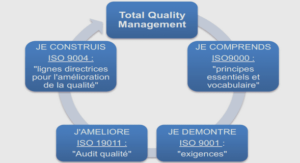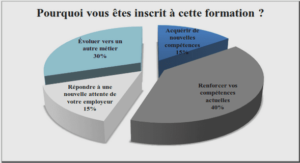A contrastive study of English and Wolof tenses and aspects
The first function of language is that of communication. Language is one of the most important and characteristic form of human behavior. Thus as a fundamental aspect of human behavior, it has an impact on virtually every kind of human interaction, including political and economical interactions. Nowadays people around the world are linked by great advances such as internet, telephone etc… and since they are different races and share different cultures, they are obliged to speak many languages in order to establish and maintain relationship. Furthermore many people speak and understand a language but they do not know anything about the data concerning the language and its functioning. So to avoid such problem we have decided to contrast English and Wolof grammars by putting emphasis on tense and aspect. We do know that the two languages have no genetic connection; they are of different origins, different continents and different histories. English is a Germanic language; it belongs to Indo European family which is a large group of languages with a common ancestor. In this family we will find languages such as French, German, Russia etc… Whereas Wolof belongs to the West Atlantic branch of the Niger Congo, it is a member of the Senegambian group of the Northern branch. Pular and Serere are its closest relatives. Wolof is spoken mainly in Senegal, Gambia and Mauritania. There is also a small number of speakers in Mali and Guinea Bissau. Although the two languages have no genetic link, however they entered into contact during the colonial period. In the middle of the eighteen century the English controlled the Senegambian region where France had got great impact. They succeeded in establishing a fruitful trade. The region also procured some products such as ivory, dye hood and gum which were of paramount importance to the textile industry. But after the American independence, France as an American alley in the war recaptured her position in Senegal and the English abandoned its settlement in 1783. Before tackling our subject we need to define the syntagm contrastive analysis and the word “tense” and “aspect” in order to have a better understanding of the topic. Contrastive analysis could be broadly defined as the systematic study of similarities and differences in the structure and use of two or more language varieties, carried out for theoretical and practical purposes. It is the aspect of linguistics considered to be the most relevant to language teaching and its usefulness urges Fries to state that: “The most efficient materials are those based upon a scientific description of the language to be learned carefully compared with a parallel description of the native language of the learner.”
English and Wolof phonological systems
English and Wolof are two different languages but their vocalic and consonantal structures show some resemblances. They have a number of long and short vowels. English has 21 vowels and diphthongs and 24 consonants, whereas Wolof has 15 vowels and 20 consonants.
English phonological system
One subject which we must study if we wish to know how language works is phonology. It can be defined as the study of how speech sounds form patterns.
Vowels According to Peter Roach: “vowels are the sounds in which there is no obstruction to the flow of air as it passes from the larynx to the lips .From the chart above we notice that English presents long and short vowels which can be perceived through their realizations of the front, central or back of the oral cavity during their production. The vowels can also be high, mid or low.
The diphthongs To quote
S. Faye: “A diphthong can be defined as a speech sound starting in the position of one vowel and moving in the direction of another vowel” 3 The diphthongs found in English are the following: [ei] as rain [ u] as roap [au] as cow [ i] as boy [ai] as high [ju] as new ..
Introduction |



